|
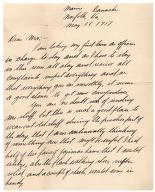
Letter to Gertrude Porter Ashley
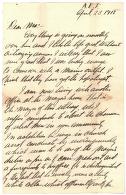
Letter to Gertrude Porter Ashley
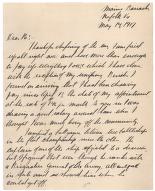
Letter to Charles Hart Ashley
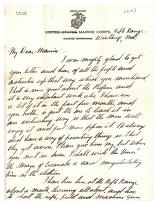
WWI Letter from Thomas Williams Ashley

Memorial Service text for Thomas Williams Ashley
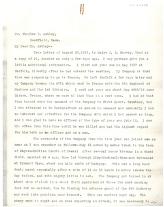
Letter to Charles Hart Ashley
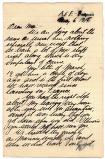
Letter to Gertrude Porter Ashley
|
Summary and Objective
Students will create a short play based upon actual writings of a World War I soldier.
At the end of this lesson, students will:
* create dialogue and action representing the experience of the average (American) soldiers' experience during WW I.
* summarize feelings of nationalism, militarism and alliances on personal scale and relate to war at large.
* understand effect of industrialization on combat and how new weapons changed the course of warfare.
* represent the individual face of war.
Teaching Plan
Step 1.
After reviewing the 4 M.A.I.N. (Militarism, Alliances, Imperialism, Nationalism) reasons for outbreak of World War I in Europe, students will brainstorm and discuss two questions: 1. How did Americans feel about the war?; 2. how did individual soldiers feel about the war? After class discussion, students will prepare play that focuses on both questions.
Step 2.
Students will break into 5 or 6 groups (depending on class size) of 3 to 4 students each. Each group will be assigned a single letter written by Thomas Williams Ashley found in the digital collection at americancenturies.mass.edu.
Step 3.
In groups, have students read their assigned letter and turn it into a one-act play, which will be put on as part of a larger play. The students should be encouraged to expand upon the letters where appropriate and add details and dialogue to make it more interesting, but must keep the intent and meaning of the letter intact. While preparing the act, students should be looking to highlight any attitudes or feelings about war, or any evidence of nationalism, militarism, alliances, or military life. Each act should somehow add to the class's general understanding of personal and American viewpoints of the war.
Step 4.
Each group will also create a backdrop setting "poster" that represents your act. These will then be posted on the wall in chronological order for a visual timeline of Ashley's life and actions during the war. Among the information that must be included on these posters are: TITLE OF ACT, DATE OF ACT, PLACE SETTING OF ACT, KEY CHARACTERS, KEY WORDS (nationalism, militarism, alliances), and of course a drawing of some relevant background.
Step 5.
Once all groups have finished, they will put on their acts in chronological order. After each act, the presenting group should provide a quick recap or their act, go over any vocabulary or critical ideas, and answer any questions.
Step 6.
Following the conclusion of the play, students will discuss closing question: If you were a friend or relative of Thomas Ashley, how might you view the war?
Step 7.
Using their textbook, class discussion or notes and the plays, students will write a two-page paper answering question: "HOW DID THE EXPERIENCE OF THE AVERAGE SOLDIER COMPARE/REFLECT THE EXPERIENCE OF GOVERNMENTS AND PEOPLE ON THE HOMEFRONT?"
|




